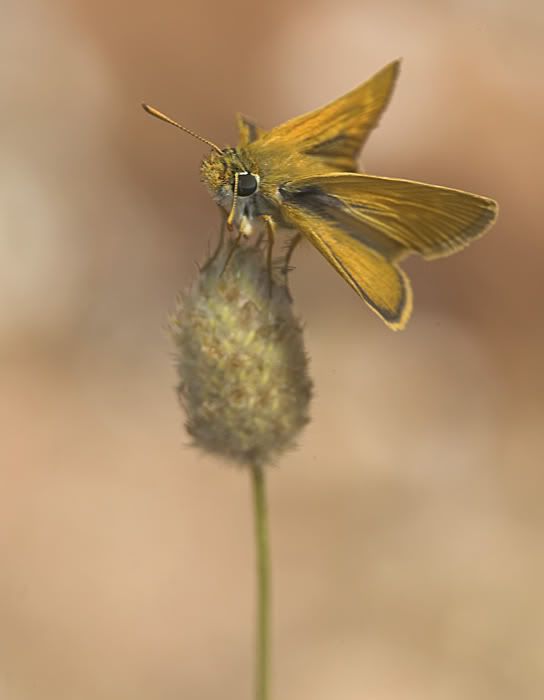This was taken at Lulworth cove but is it actually a Lulworth Skipper?
Many thanks
Steve
Image a few posts below!..
Is this a Lulworth Skipper?
Is this a Lulworth Skipper?
Last edited by steveh on Sat Apr 28, 2007 3:45 pm, edited 1 time in total.
- Dave McCormick
- Posts: 2388
- Joined: Fri Mar 16, 2007 8:46 pm
- Location: Co Down, Northern Ireland
- Contact:
- Dave McCormick
- Posts: 2388
- Joined: Fri Mar 16, 2007 8:46 pm
- Location: Co Down, Northern Ireland
- Contact:
Here is one weay to tell difference from a Essex skipper and a small skipper, (probably won't help this case unless you can see antennae, need a larger pic to see properly)
Th easiest way to tell the difference between the two is to look at the tips of the antennae. The Essex skippers are black. Small skippers are orange.
Lulworth Skipper info (might help):
With a wingspan of approximately 2.5 cm this is Britain's smallest Skipper. It is noticeably darker than the other Thymelicus skippers.
The females have orange 'sun ray' markings on their forewings whereas the males have darker brown wings with the usual black scent brand in the center of each forwing. It occurs in southern and central Europe, Asia Minor and North Africa.
In Great Britain it is restricted to the south coast of the county of Dorset centered on the village of Lulworth, where it was first discovered in 1832, hence its English name. There are historical records of now extinct colonies in the counties of Devon and Cornwall (however the recorded sightings in Cornwall are disputed).
They only fly in strong sunshine and favour south facing habitats indicating that they are at the very northern limit of their range in the UK. The butterfly's main habitats include chalk downland, coastal grassland and undercliffs.
Th easiest way to tell the difference between the two is to look at the tips of the antennae. The Essex skippers are black. Small skippers are orange.
Lulworth Skipper info (might help):
With a wingspan of approximately 2.5 cm this is Britain's smallest Skipper. It is noticeably darker than the other Thymelicus skippers.
The females have orange 'sun ray' markings on their forewings whereas the males have darker brown wings with the usual black scent brand in the center of each forwing. It occurs in southern and central Europe, Asia Minor and North Africa.
In Great Britain it is restricted to the south coast of the county of Dorset centered on the village of Lulworth, where it was first discovered in 1832, hence its English name. There are historical records of now extinct colonies in the counties of Devon and Cornwall (however the recorded sightings in Cornwall are disputed).
They only fly in strong sunshine and favour south facing habitats indicating that they are at the very northern limit of their range in the UK. The butterfly's main habitats include chalk downland, coastal grassland and undercliffs.




